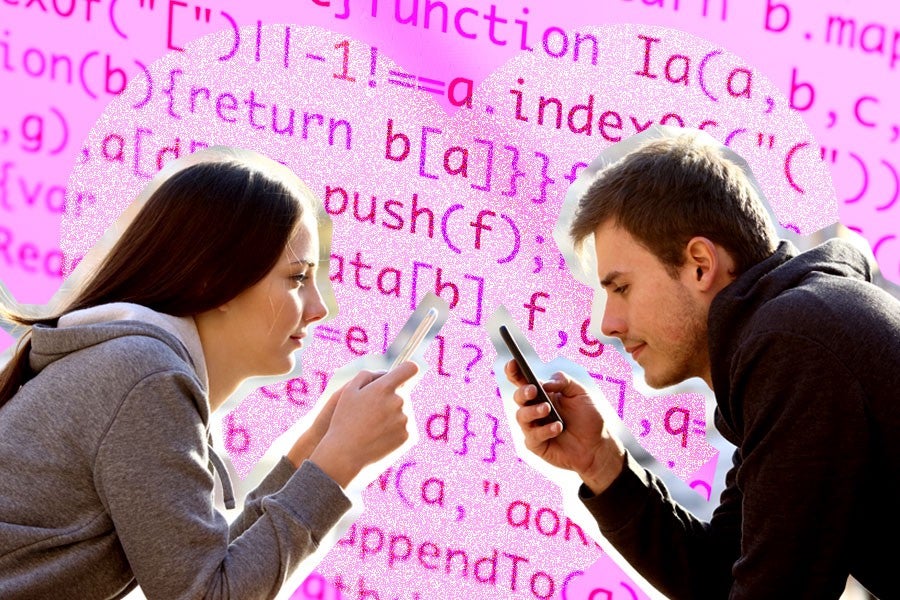It’s Valentine’s Day, which means you’re likely doing one of two things: Spending the evening with someone you love, or staring into the deep abyss of potential matches flashing across your phone. Because, after all, this is the modern world, and serendipity is a lot like dial-up internet: It had its time, but now we’ve got high speed wifi to hammer a tunnel through our brains instead.
What does this brave new world mean for the concept of love, though? Is meeting a stranger’s gaze across a crowded room a thing of the past? Is romance dead? According to Nicolas Vayias and Benjamin Easton, backend engineers for the dating app Coffee Meets Bagel, no: It’s just more quantifiable.
“When you start to work on it and see the data, you realize how statistical love is,” says Vayias. “There’s no one true love: You could end up with this person versus that person, but it doesn’t mean that other combinations wouldn’t have been compatible, too — it’s just a numbers game.”
Which might sound a little unromantic to traditional ears, but think of it this way: Your odds of meeting someone who feels like your “one true love” just went up exponentially.
One important point that programming for love has taught the pair is how often people are looking at the wrong details when searching for a partner. “A user might say they want someone who does yoga and is 5-foot-5,” says Easton. “But based on the data we see, a lot of these specifics don’t translate to connections. Some of the things people look for are just pulled out of thin air — maybe they like yoga and had an ex that was 5-foot-5. These things are hardly ever make or break when it comes to a making a connection.”
In this sense, meeting someone on a dating app is a lot like meeting someone in real life: You may have a “type,” or assume, say, you could never date a lawyer, but whether you’re walking by or swiping by, that person could still surprise you by being right in multiple other ways.
Perhaps less surprising are the different tendencies men and women exhibit when parsing the playing field. According to Vayias, women tend to spend much more time examining a person’s profile than men. “They care about what you studied, what your hobbies are, they actually read the descriptions,” says Vayias. This is in stark contrast to guys using dating apps. “Guys are just looking for women who they find attractive,” says Vayias.
While this might sound anecdotal, the data backs him up: In one speed-dating study from 2006, conducted by economist Raymond Fisman and colleagues for Columbia University, researchers found that while both men and women care deeply about attractiveness, women also care deeply about intelligence, too — roughly twice as much, in fact. “Every point increase in a man’s intelligence rating (on a 1-to-10 scale) boosted the chances a woman would want to see him again by an average of 4.5 percentage points,” Fisman wrote. “While an equivalent increase in a woman’s intelligence increased the probability that a man would want to reconnect by only 2.3 percentage points.”
This revelation has inspired Vayias to change his entire approach to online dating. “I’ve started putting more effort into my profile,” he explains. “I initially thought the text and other profile information didn’t matter much, but now I know they actually do.”
All of which is to say that love is still love, even when it’s curated by an algorithm. It’s just that now you can find it while scrolling through your phone on the toilet. And who doesn’t want to live in a world with possibilities like that?

